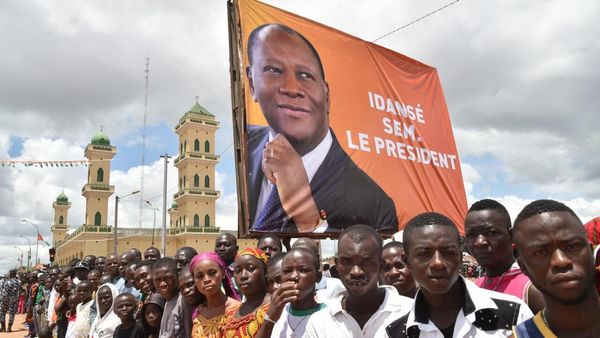The Federal Reserve's primary inflation rate, the core PCE price index, fell in April to its lowest level since March 2021. Yet that may be of little comfort to investors and Fed policymakers, with Trump tariffs expected to boost inflation in coming months. The S&P 500 is slightly lower after President Donald Trump said China has "violated" the preliminary trade deal. That comes after Nvidia earnings provided a stock market lift on Thursday.
The inflation outlook, however, just became more hazy after a U.S. Court of International Trade ruling on Wednesday threw out the bulk of President Trump's second-term tariffs, saying he overstepped his authority. On Thursday, a federal appeals court put that ruling on hold for now.
10:25 a.m. ET
Economist: Core Inflation Headed to 3%+
The PCE inflation report showed most components of core services inflation "still look relatively restrained, a trend we expect to continue, given the balanced labor market and ongoing slowdown in wage growth," wrote Oliver Allen, senior U.S. economist at Pantheon Macroeconomists.
Still, the inflation data showed "early signs of a tariff-induced boost to prices" with the 0.3% rise in core goods prices that reverse a 0.3% decline in March, he said.
"Much bigger increases in core goods inflation probably loom as the costs of new tariffs are eventually passed on."
He expects core PCE inflation to peak between 3% and 3.5% later this year — "if the current mix of tariffs remains in place."
9:17 a.m. ET
Why Personal Income Surged
Aggregate wages and salaries rose 0.5% for the third straight month reflecting a combination of job gains and wage growth. Meanwhile, personal current transfer receipts surged by 2.8% from March, largely due to the Social Security Fairness Act, which awarded benefits for work in which employees didn't pay Social Security taxes. The group most included teachers, firefighters, police officers and other public workers in areas that opted out of Social Security.
8:51 a.m. ET
Goods And Services Inflation
Core goods prices rose 0.27% on the month and 0.25% on the year, with a modest lift from tariffs in April.
Core services prices rose 0.06% in April and 3.27% from a year ago.
8:48 a.m. ET
Unrounded PCE Inflation Data
The data looked just as good when not rounded to the tenth. Core PCE prices rose 0.12% on the month. The 12-month core inflation rate eased to 2.52%.
8:44 a.m. ET
Futures Slightly Lower
S&P 500 futures fell 0.3% following the PCE inflation report. That's a slight improvement from earlier following Trump's China comments.
8:42 a.m. ET
Weak Stock Market Curbed Core PCE Inflation
Core PCE inflation was held down by the tumbling stock market into early April, which had the effect of lowering portfolio management costs, since those costs relate to asset levels. The market-based version of the core PCE price index actually rose 0.3%.
Federal Reserve Chairman Jerome Powell has highlighted the importance of market-based inflation for Fed policy.
A rebounding stock market in May should boost portfolio management costs in the next report.
8:39 a.m. ET
Personal Income Strong
Personal income rose 0.8%, more than doubling forecasts. Consumer spending rose 0.2%, as expected.
8:34 a.m. ET
PCE Inflation Cools As Expected
Both the overall and core personal consumption expenditures price index rose 0.1% in April. That lowered the respective 12-month inflation rates to 2.1% and 2.5%, as expected.
PCE Inflation Forecasts
Economists expect both the overall personal consumption expenditures price index and the core rate, which excludes food and energy, to rise 0.1% in April. That would lower the broad PCE inflation rate to 2.1%. The core rate, central to Fed policy, is seen dipping to 2.5% from the initially reported 2.6% in March.
The premier inflation data is released with the Bureau of Economic Analysis personal income and outlays report. Personal income is forecast to rise 0.3%, while consumption expenditures are expected to edge up 0.2%.
Fed Rate-Cut Outlook
Federal Reserve Chairman Jerome Powell has said that policymakers that the steady economic backdrop should allow policymakers to take their time before resuming rate cuts. The Fed wants to make sure that any tariff-fueled boost to inflation doesn't persist, Policymakers also are keeping an eye of fiscal policy, which could add economic fuel.
Ahead of the key Fed inflation data, markets see 24% odds of a rate cut at the July 30 Fed meeting, rising to 67% by the following meeting on Sept. 17. For the full year, markets are pricing in a 70% likelihood of 50 basis points in rate cuts, with 30% odds of no more than a quarter-point in cuts.
S&P 500
S&P 500 futures are off 0.4% in early Friday stock market action. That follows Thursday's 0.4% rise amid dramatic shifts in the legal status of Trump tariffs.
The S&P 500 finished 18.65% above the 52-week low on April 8, a day before Trump announced a 90-day delay before reciprocal tariffs would jump.
The S&P 500 ended 3.8% below its all-time closing high on Feb. 19.







